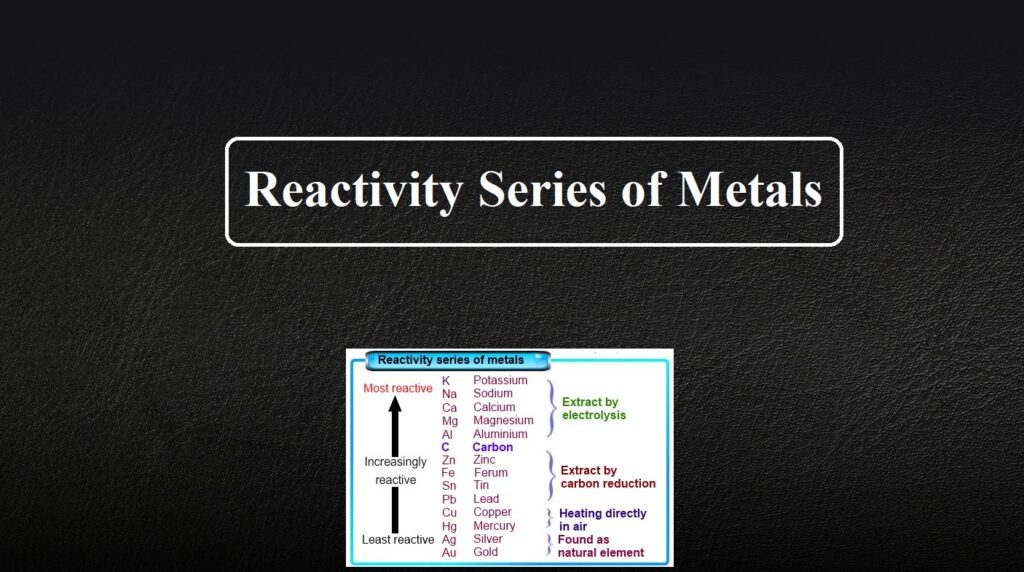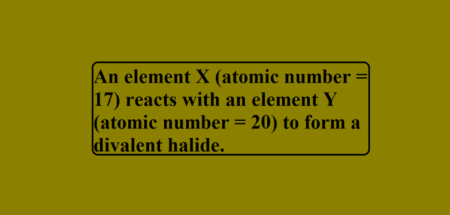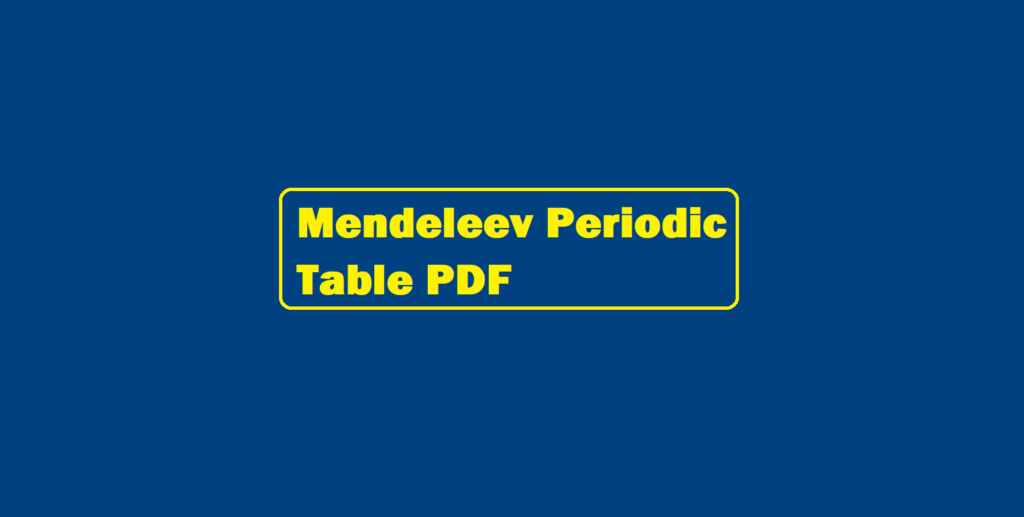Reactivity Series of Metals
Reactivity Series of Metals
The metal reactivity series is a very important concept in chemistry, placing the metals, in order of reactivity from most reactive to least reactive. It’s also a useful method in predicting the products of simple displacement reactions involving two different metals, as well as it also provides an insight into why different metals are extracted from their ores in different manners.
The reactivity of metals is because of their incomplete outer orbitals or due to their electronic configuration. Metals form positively charged ions as they tend to lose electrons. Metals with high atomic numbers tend to be more reactive as their electrons are far from the positively charged nucleus.
When metals react with other substances, the metal atoms always form positive ions. The easier it is for metal to form its positive ion, the more reactive the metal is. Metals can be arranged in order of their reactivity. Very unreactive metals, such as gold and platinum, are found in the Earth’s crust as pure metals. These are called native metals.
In this section, we will discuss common metals in order of reactivity, as well as showing their reactions with air, water and steam.
Reactivity Series of Metals
Reactivity Series of Metals
| Metal | Reaction with oxygen (when heated and at room temperature) | Reaction with water | Reaction with steam | Reactivity |
| Potassium (K) | Reacts vigorous when heated. Lilac flame and white solid formed. Tarnishes when freshly cut at room temperature
4K(s) + O2(g) → 2K2O(s) |
Reacts vigorously. Floats on the surface. Moves and fizzes. Burns with a lilac flame. Heat is released. Crackle as it disappears. A colourless solution remains. | Reaction too dangerous to be attempted. | Most reactive |
| Sodium (Na) | Reacts vigorously when heated. Yellow/orange flame and white solid formed. Tarnishes when freshly cut at room temperature | Reacts vigorously. Floats on the surface. Moves and fizzes. Melts to form a silvery ball. Heat is released. Crackle as it disappears. Colourless solution remains. 2 Na + 2 H2O →2 NaOH (aq) + H2 (g) |
Reaction too dangerous to be attempted. | ⬆ |
| Calcium (Ca) | Reacts vigorously with strong heating. Brick red flame and white solid formed. Slowly forms a surface oxide at room temperature | Reacts readily. Fizzes. Grey solid rises then sinks. Heat is released. Grey solid disappears. Solution appears milky. Ca(s) + 2H2O(l) → Ca(OH)2(aq) + H2(g) |
Reaction too dangerous to be attempted. | ⬆ |
| Magnesium (Mg) | Reacts readily with strong heating. White light and white solid formed. Slowly forms a surface oxide at room temperature 2Mg(s) + O2(g) → 2MgO(s) |
Very slow reaction. A few bubbles of gas were produced. Mg(s) + H2O(g) → MgO(s) + H2(g) |
Reacts on strong heating. White light and white solid formed. | ⬆ |
| Aluminium (Al) | Reacts readily with strong heating as a powder. White solid formed. Slowly forms a surface oxide at room temperature | No reaction | Reacts as a powder on strong heating. White solid formed. | ⬆ |
| Zinc (Zn) | Reacts steadily when heated forming a yellow solid which changes to white on cooling. Slowly forms a surface oxide at room temperature | No reaction | Reacts as a powder on strong heating. Yellow solid forms which change to white on cooling. | ⬆ |
| Iron (Fe) | Reacts readily when heated as iron filings. Orange sparks and the black solid formed. Slowly forms a surface oxide at room temperature | No reaction | Reacts as a powder on very strong heating. The black solid formed. | ⬆ |
| Copper(Cu) | Reacts on heating to form a black solid. Slowly forms a surface oxide at room temperature | No reaction | No reaction | Least reactive |
Some Important Points:
(i) The metals at the top of the reactivity series are powerful reducing agent since they are easily oxidized. These metals tarnish/corrode very easily.
(ii) The reducing ability of the metals grows weaker while traversing down the series.
(iii) The electro positivity of the elements also reduces while moving down the reactivity series of metals.
(iv) All metals that are found above hydrogen in the activity series liberate H2 gas upon reacting with dilute HCl or dilute H2SO4.
(v) Metals that are placed higher on the reactivity series have the ability to displace metals that are placed lower from their salt solutions.
(vi) Higher ranking metals require greater amounts of energy for their isolation from ores and other compounds.
Reactivity Series of Metals



